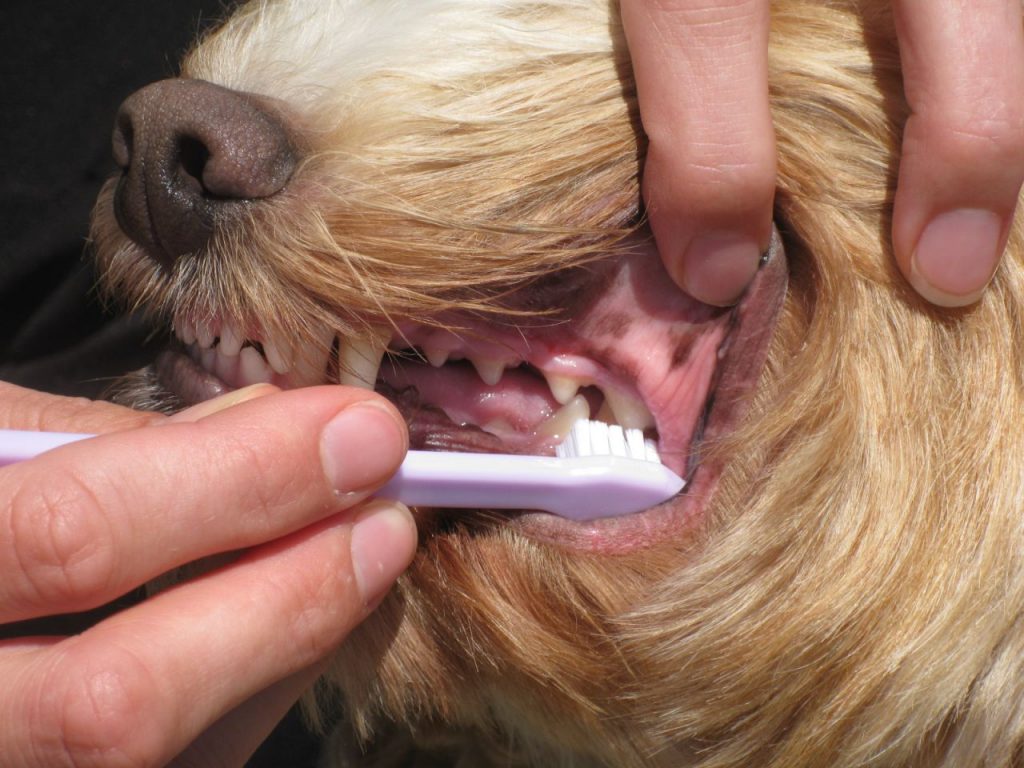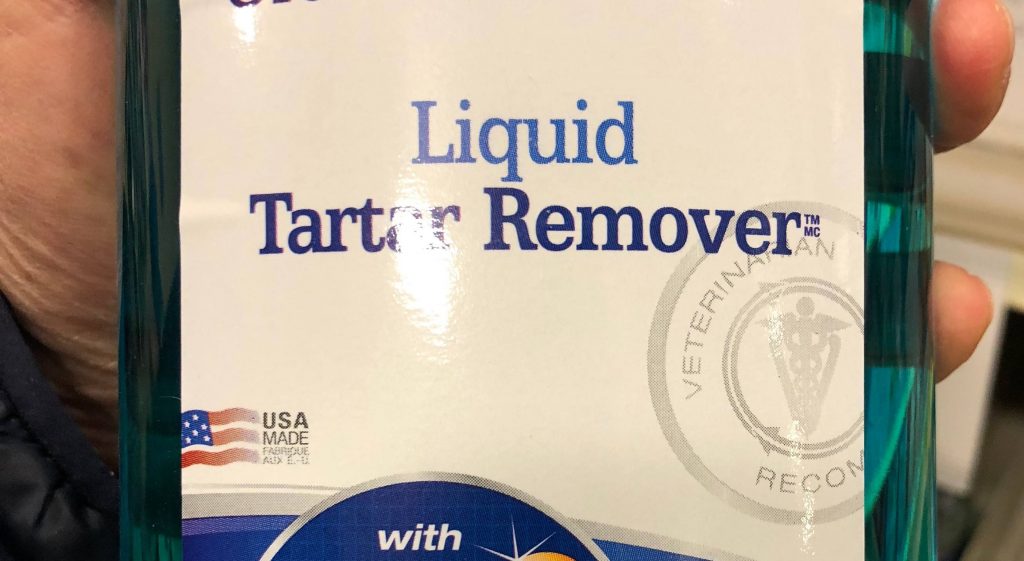What is periodontal disease?
Periodontal disease is one of the most common diseases diagnosed in dogs and cats. Simply put, it is a disease caused by the build-up of plaque along the gumline. Plaque is a sticky material that builds up on teeth and contains millions of bacteria that are protected within the plaque biofilm. Plaque causes the first stage of periodontal disease- gingivitis- indicated by swollen and bleeding gums. As periodontal disease advances, it affects the structures that surround the tooth and hold it in place, including the cementum that covers the root of the tooth, the periodontal ligament, and the alveolar bone. This leads to eventual tooth loss as these structures are destroyed.
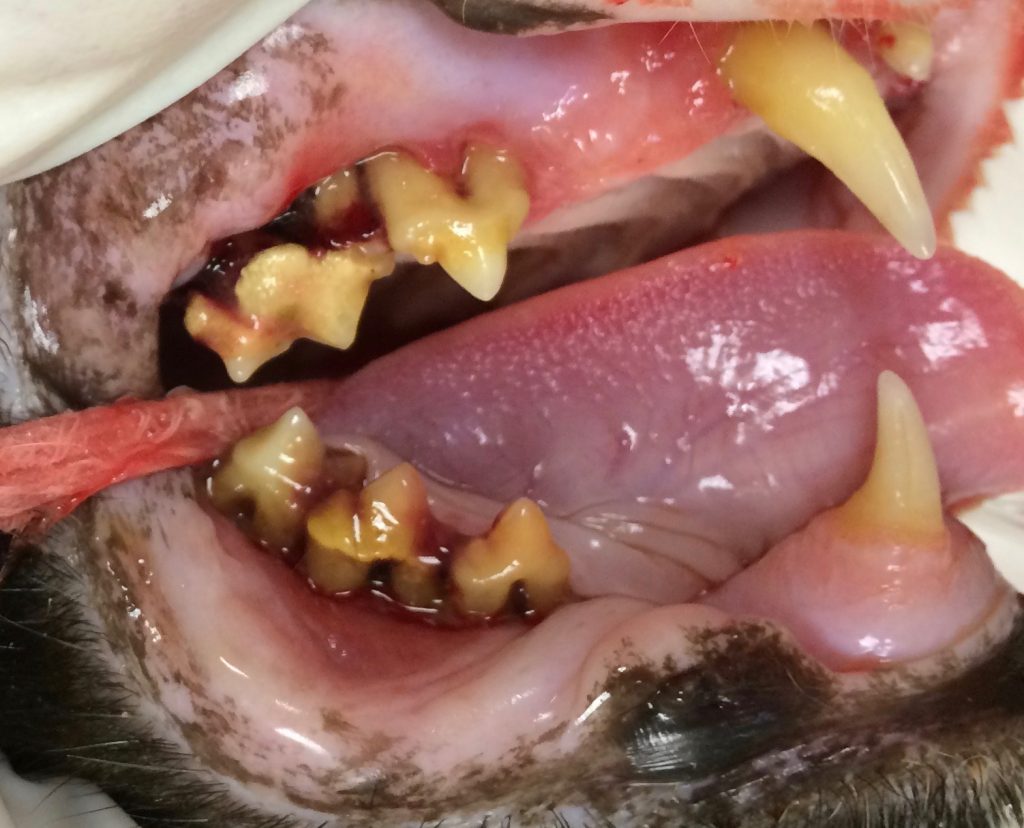
What causes periodontal disease?
Dental plaque is made up of a biofilm of bacteria that adheres tightly to the teeth. This plaque accounts for the “fuzzy” feeling of teeth after they haven’t been brushed for a period of time (think of how your teeth feel when you wake up in the morning!). The bacteria in the plaque cause an inflammatory response in the gingiva (gingivitis), which can progress and affect other structures of the teeth as it infiltrates below the gumline. It is important to understand that removing the plaque from the visible surface of the tooth is only one part of treating periodontal disease. If the disease has progressed beyond gingivitis, removing plaque build-up under the gumline is critical. This is one of the reasons why scaling teeth without anesthesia in our animal patients has no benefit at all, and often causes unnecessary pain and suffering.
Plaque, if left undisturbed on the tooth surface, will eventually calcify and harden into calculus (also known as tartar). These hard deposits will also form under the gumline as periodontal disease progresses. Once plaque has hardened into calculus/tartar, it can only be removed by scaling with sharp scalers or ultrasonic instruments. There are no mouthwashes, rinses, or strips that will effectively remove calculus once it has hardened on the tooth surface.
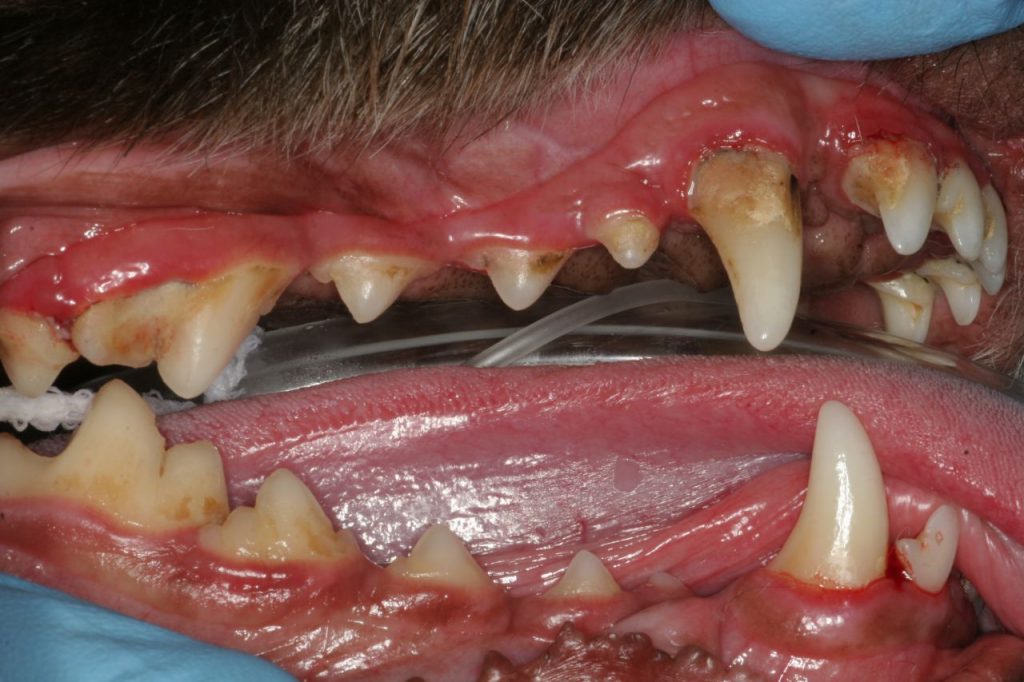
Are there risk factors for periodontal disease in dogs and cats?
Yes, there are certain factors that can increase the risk of periodontal disease in dogs and cats, although any age or breed of animal can be affected.
- Genetics- Just like in people, some animals are more prone to developing periodontal disease than others. Smaller breeds and purebred dogs and cats are particularly susceptible.
• Crowded teeth- This is seen in the smaller and brachycephalic (short-faced) animals. In many toy breeds and brachycephalic breeds, the teeth are too close together or can be rotated in an abnormal position, making them more prone to developing pockets of bacteria around the teeth.
• Diet- Diet does not play a specific role in the development of periodontal disease. Although chewing is a good way to mechanically remove plaque from the teeth, there is no magic chew toy or diet that will prevent periodontal disease on its own. Chew toys, diets, and bones should be considered a component of proper dental care, not a sole strategy for prevention.

Does periodontal disease affect the body?
Yes! It is becoming more and more apparent through research that chronic disease/inflammation in the mouth can affect other organs, including the liver, lungs, heart, kidneys, etc… It is also well-known that periodontal disease can make conditions like diabetes much harder to manage. That’s why a healthy mouth=healthy body!
Diagnosis and Treatment
The diagnosis of periodontal disease involves dental radiographs and a complete oral examination performed under general anesthesia. A periodontal probe, similar to what is used in people, is used to measure the pocket depth around all teeth. Pockets greater than 3 mm in dogs and 1 mm in cats generally indicate some amount of bone loss around the teeth and should be explored and treated as needed. There are 4 stages of periodontal disease. The first stage is gingivitis, which affects over 90% of our veterinary patients. Even a small amount of plaque build-up along the gumline will result in some amount of gingival inflammation, and often one will note bleeding when brushing or the veterinarian will notice bleeding when performing the oral exam/probing. Once we progress to stage 2 periodontal disease, there has been some amount of bone loss around the teeth and the disease becomes more difficult to control. In stage 2, there is less than 25% attachment loss, which progresses to 25-50% in stage 3, and greater than 50% in stage 4. Generally speaking, once we have reached stage 4 periodontal disease, extractions are needed. Even with stage 2-3, extractions might be recommended depending on the type of bone loss and other facts, including dental crowding, furcation (area between two roots) exposure, etc…
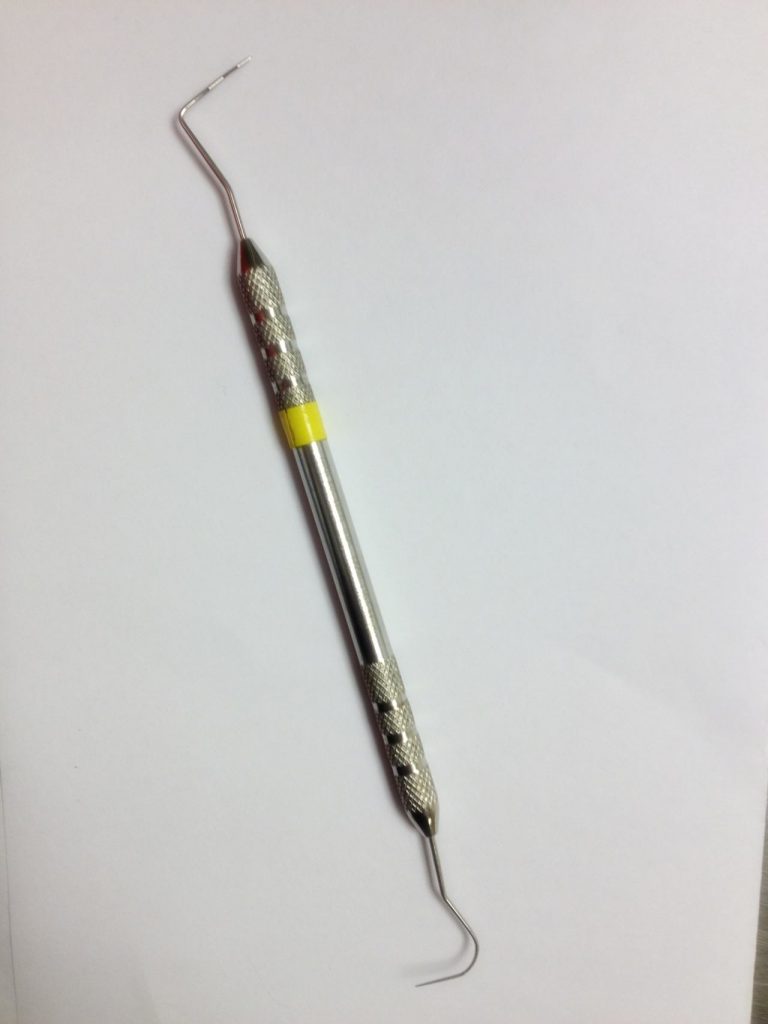
There are some advanced techniques available to veterinary dentists that are specifically for the treatment of advanced periodontal disease. These are utilized for those owners that are highly motivated to prevent tooth loss. Options include bone grafting techniques, membrane placement, flap techniques, and root planing. Whether or not a tooth or teeth are amenable to these types of treatments depends largely on the type of bone loss affecting them and the ability of the owner to provide proper home-care (brushing) and comply with scheduled rechecks (often involving anesthesia).
Prevention
The good news is that periodontal disease can be prevented in most animals. Unfortunately there are some cats and dogs that have such a strong genetic predisposition to periodontal disease that even with daily brushing and regular dental care, tooth loss will still occur. Fortunately our dogs and cats can live very happy lives without teeth.
Here are steps that you can take to prevent periodontal disease:
- Brushing is the single most effective thing one can do to remove plaque build-up from around the teeth. Daily brushing should be your goal. However, some pets require more frequent brushing than others.
- Wipes made for dogs and cats are another good option for the prevention of plaque build-up as they provide much of the benefit of mechanical removal of plaque that brushing does. For dogs and cats that won’t allow a toothbrush in the mouth, wipes are the next best option. I’ve had success just using a gauze square and wiping the teeth with that as well.
- Chew toys and other oral devices can be considered a supplement to brushing, but it is important to understand that they should not replace proper brushing. Note: we see a large number of dogs that have fractured teeth while chewing on really hard chew bones, particularly nylon bones, marrow bones, antler bones, pressed rawhide, etc… Use these chews with caution and check your dog’s teeth regularly. Chews that are soft or rubber, or flat rawhides and other dental chews, are generally very safe for the teeth.
- As a general rule, if a product that you find at the pet store or online advertises by saying that it will remove tartar with no brushing required, it is likely not a very useful product. As discussed before, plaque is well-protected in a biofilm and requires mechanical disruption to remove. Additionally, once it hardens into calculus/tartar, it is almost impossible to remove without sharp instruments.
- Lastly, professional care, just like in people, is a huge component in proper dental care. See your veterinarian or a veterinary dentist regularly to see if a professional cleaning is warranted. Most dogs and cats (especially small breed dogs) will require professional cleanings many times throughout their lives (these might need to occur every 6-12 months depending on the particular dog/cat). How often, and at what age they need their first cleaning, should be determined by your veterinarian or veterinary dentist. Lastly, make sure that dental radiographs are a component of your pet’s dental care.
- Remember that animals DO NOT show signs of dental pain and are often suffering silently from pain or infection in the mouth. It is up to us, as their guardians, to make sure that they are free from any suffering.
